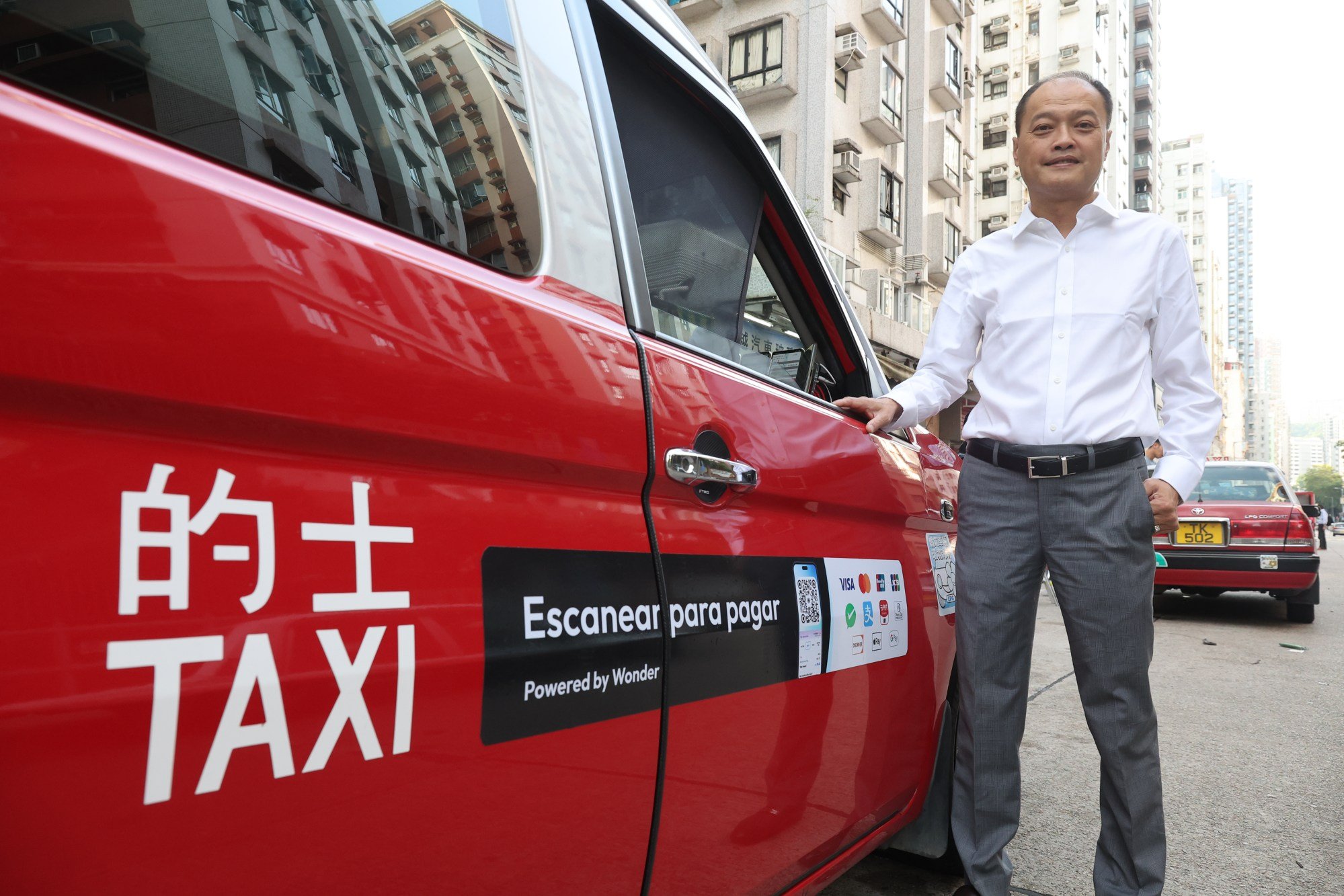What is Hong Kong’s new premium taxi scheme and how will it affect passengers?
The vehicles in these fleets must not be more than three years old when they join and must not be more than 10 years old throughout the license period.
A mixed fleet servicing New Territories as well Kowloon and Hong Kong Island – that is, both green and red taxis – should consist of 300 to 1,000 premium vehicles, while a fleet servicing New Territories alone should have 100 to 350 premium vehicles.
2. What kind of services can passengers expect?
Passengers will be able to book and pay online through mobile applications and websites. CCTV systems must be installed to “enhance driving safety”, according to the authorities.
Premium fleets will be allowed to set their booking charge on top of the metered fare, or an agreed lump sum fare before the journey.
A few dozen designated premium taxi stops will be set up by the government at the airport, several border control points, the West Kowloon high-speed rail terminus, a few Airport Express stations, the Kai Tak Cruise Terminal and Hong Kong Disneyland, among others.
3. Why has such a scheme been introduced?
Secretary for Transport and Logistics Lam Sai-hung said that setting up a premium taxi fleet was the government’s prime solution for fixing the industry’s reputation.
The rogue practices of “a handful of black sheep” had led to “unpleasant experiences” for passengers, he said, and urged the industry to “live up to expectations” and seize opportunities of the new initiative.
Passengers had noted that taxi drivers would also complain about or even refuse to take certain routes. Other negative practices included overcharging of fares, reckless speeding and rudeness.
There was also a backlash after several cab drivers posed as Uber passengers and asked the ride-hailing drivers to stop near police patrols so they could be “spontaneously reported”.
Although Uber has been in the city for nine years, ride-hailing services are illegal for vehicles without a hire-car permit.
4. Which companies have joined?
Fifteen applicants have filed applications.
Chau Kwok-keung, chairman of the Hong Kong Taxi and Public Light Bus Association and founder of Jumbo Taxi, initially expressed doubts about the scheme last October.
However, he submitted and application on Friday to operate a 400-strong fleet of premium taxis, with an anticipated investment of about HK$70 million (US$9 million).

“The emergence of two mainland Chinese platforms, Didi Chuxing and Amap, venturing into the Hong Kong taxi market stated that they will not use private vehicles, dispelling concerns within the local taxi industry. In light of these developments, I am optimistic about the industry’s future prospects,” Chau said when asked about his change of heart.
Chau highlighted the government’s commitment to prohibiting illegal carriage of passengers – a reference to Uber – and said he believed the industry would experience a positive turnaround if premium taxis could win back former customers who had turned to ride-hailing services.
Hong Kong Tele-call Taxi Association chairman Wong Yue-ting was also among the applicants, saying his fleet would consist of 350 premium taxis operating in the New Territories. His company and 11 others would invest about HK$100 million.
The investment would go towards vehicles and relevant equipment such as cameras and GPS systems, and they would select about 500 to 700 drivers to participate in the scheme as he emphasised the importance of service.
“Ultimately, the quality of drivers is the most important,” Wong said, noting that there were currently 2,800 taxis in the New Territories and his company would be contributing an additional 300 premium ones under the scheme.
The company would focus on the quality of service provided by the drivers – such as being on time – and would consider offering financial rewards if they received good reviews from passengers.
His company would also provide training to those who received complaints, or have them replaced in the premium taxi fleet if necessary.
“Through the premium service, we hope to influence other taxis in the New Territories so the vast majority adopts similar practices, and customers can feel it when service has improved,” he said.
Though it was too early to predict if the new scheme would be profitable, Wong added that he hoped “to promote and expand the model so there is more business and more people can benefit”.
5. When will commuters get to ride on the new taxis?
Applications to the government to operate premium taxi fleets closed at noon on Friday, with results to be announced in the middle of the year. Those awarded the license should complete their preparation within a year and operate by mid-2025.